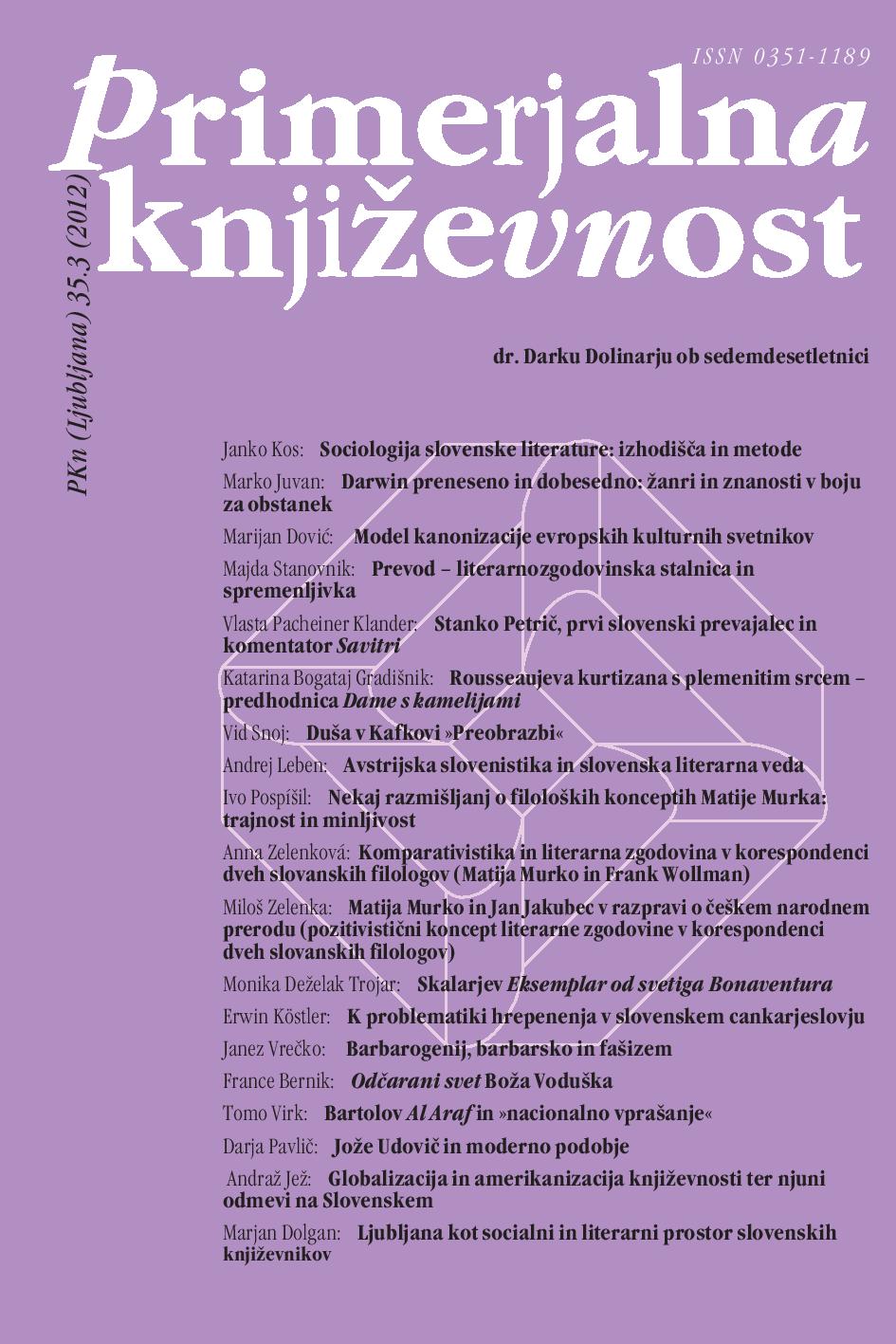Adam Skalar’s Saint Bonaventure’s Exemplar: A Presentation of Selected Questions of Textual Criticism
Keywords:
religious literature, Baroque, St. Bonaventura, Soliloquium, Slovenian translations, Skalar, Adam, philosophical mysticismAbstract
Adam Skalar lived and worked during the first two thirds of the seventeenth century. Because of his essays preserved as part of a manuscript codex kept at the Manuscript Department of the National and University Library in Ljubljana, he is one of the more important writers of the Catholic restoration. Unfortunately, he has been often overlooked. Thus with his translations (Eksemplar od svetiga Bonaventura [Saint Bonaventure’s Exemplar], Šula tiga premišluvana [The School of This Thought]) and own works he broke new ground and introduced new milestones into seventeenth-century Slovenian literature: with his two translations he enriched Slovenian literature with a philosophical treatise (Eksemplar od svetiga Bonaventura) and an example of meditative prose (Šula tiga premišluvana) and, in terms of genre, his Vselaj inu nikoli, to je večnost (Always and Never, This Is Eternity), which is most likely a work of his own, is an ascetic meditation on the mystery of doom. – Skalar’s translation titled Eksemplar od svetiga Bonaventura (Saint Bonaventure’s Exemplar) is interesting for various reasons; this article focuses on the issues concerning the German original that Skalar translated into Slovenian, and the answers fostered by the realization that what lies in the background of the German original and Skalar’s Eksemplar is not Saint Bonaventure’s theological work Breuiloquium, but his theological and mystical work Soliloquium. The article presents the similarities and differences between Bonaventure’s Soliloquium and the German original that Skalar used: Johann Huber’s German translation of Breuiloquium sancti Bonaventurae. The comparison of Bonaventure’s original essay with Huber’s and Skalar’s translation showed that Huber apparently used one of the many Pseudo-Bonaventure versions of the Soliloquium as the original. Skalar’s translation reflects many similarities with Huber’s translation of 1599, and the differences between them are mainly the result of Skalar’s shortening and adaptation of the work. Skalar’s translation is also valuable because it concludes the long tradition of adaptations and publications of Bonaventure’s Soliloquium, which spanned the period between the thirteenth century and Huber’s translation of one of its Latin adaptations at the end of the sixteenth century.References
Cardelle de Hartmann, Carmen. Lateinische Dialoge 1200–1400: Literaturhistorische Studie und Repertorium. Leiden: Brill Academic Publishers, 2007.
Feiss, Hugh. On Love: Victorine Texts in Translation: Exegesis, Theology and Spirituality from the Abbey of St.Victor. London: New City, 2012.
Narodna in univerzitetna knjižnica. Skalarjev rokopis. Signatura: Ms K 25 (Deželak Trojar, Monika (ur.). Skalarjev rokopis 1643. Editio princeps. Znanstvenokritična izdaja. Ljubljana in Celje: Celjska Mohorjeva družba, 2011).
PP. Collegii S. Bonaventurae. Seraphici Doctoris S. Bonaventurae Decem Opuscula ad Theologiam Mysticam spectantia (Editio secunda). Ad Claras Aquas (Quaracchi): Ex typographia eiusdem collegii, 1900. (Soliloquium de quatuor mentalibus exercitiis, str. 45–167).
Ruh, Kurt. Die deutsche Literatur des Mittelalters: Verfasserlexikon. Zv. 1. Berlin, New York: W. de Gruyter, 1978.
Staatsbibliothek zu Berlin. Breviloquium Sancti Bonaventurae: Das ist, ein Exemplar und Vorbild deß Menschlichen Lebens (2 mikrofiša). Edition St. Walburg: Frauenkloster-Bibliothek 16.–19. Jahrhundert; Wildberg: Belser Wiss. Dienst, 1999. Signatura: 50 MF 544–76017.
Stock, Brian. Augustine’s Inner Dialogue: The Philosophical Soliloguy in Late Antiquity. New York: Cambridge University Press, 2010.


